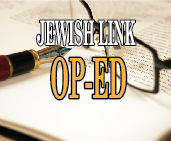Individuals who come together in a community maintain a shared identity. Communities, and social groups of all kinds, are defined by common behaviors, beliefs and values.
But communal identity may also have a negative component, defined by behaviors, beliefs and values which a community does not accept. What a group perceives as offensive in a rival group can be a major factor in shaping its identity. So, for example, the stream of Orthodox Judaism with which a community chooses to identify—Haredi, Modern, Centrist and, now, Open—is a function of what it rejects as well as what it upholds. To make the choice simpler, advocates of a particular stream will often highlight the deficiencies of the alternative streams. “Us” is brought into sharper focus, and appears more attractive, when viewed against a clearly objectionable “them.”
Knowing what lies beyond the pale of “us” helps to set a group’s moral and ideological boundaries. But an undue emphasis on “them” can be morally and emotionally self-destructive. When we repeatedly denounce competing ideas, what follows may be a wholesale dismissal of the communities representing them. Outsiders become enemies, worthy of fear and even hatred. Moreover, deepening the divide between one’s own group and those on the outside may result in painful and unnecessary alienation; the more we push “them” away, the more isolated “us” becomes.
Rather than an “us and them” view of the world, an alternative approach to identity can be modeled on a set of concentric circles (a concept that was introduced in a sichah by R. Aharon Lichtenstein, in a different context). In this model, the outermost circles are the broader, more inclusive levels of identity, and the inner circles become more exclusive as they decrease in size. For example, starting with the widest circle and moving inward, a particular individual may be an American and a Jew. As the circles decrease in size, identity is based on narrower categories and finer distinctions, e.g., Human; American; Jew; Orthodox; Modern Orthodox; Member of Community X.
While individuals and communities tend to spend much of their mental and social lives at the innermost circles of identity, they can also identify on some level with fellow members of each surrounding circle. An American Orthodox Jew is also a (non-denominational) Jew and, at the same time, is an American citizen and a human being. Though residing most of the time in the innermost circle, he or she shares values, responsibilities and rights with fellow Jews, Americans and humans.
In this view of the world, “us” extends well beyond one’s immediate community. While the borders of the concentric circles are real—at each level, those on the inside have more to shoulder than those on the outside—the smaller circles remain subsets of the larger ones. The inner circles share a center point, and fair amount of real estate, with the outer ones.
This model can help us navigate some contemporary cultural challenges. For example, as we are relentlessly bombarded by electronic information and media, there is a natural tendency to hunker down within the innermost circle and to draw the curtains tightly shut. But this issue, among many aspects of 21st century life, is a human one that cuts across all layers of identity (the impact of constant electronic connectedness may be more troubling than its specific content). Many outside of our small circle have never attended an “asifa,” yet share the same concerns about our data-overloaded society. We would do well to participate in the conversations taking place across the spectrum of human identity on such universal challenges (on the problem of electronic hyper-connectedness, see Hamlet’s Blackberry by William Powers. A pithy summary, in his own words: “Digital busyness is the enemy of depth”).
It is comfortable and reassuring to remain in the close company of peers and to celebrate the uniqueness of our inner circle. We should also keep in mind that outside, among “them,” there is much more of “us” than we may care to admit.
By David S. Zinberg










